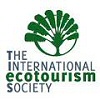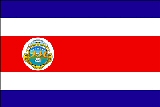Nature Travel Specialistsnature tours & travel, wildlife tours, adventure travel and general travel to Australia, Southeast Asia, South America and Alaska
COSTA
RICA INFORMATION AND PACKING LIST
A passport, current for 30 days beyond your return date and a return ticket is required for travel to Costa Rica as a short-term tourist. All travelers should have their own passport, which must be undamaged. Costa Rican authorities have been known to deny entry to travelers with damaged passports. If you are traveling with a minor, you will need written authorization from both parents for him/her to leave the country. US and Canadian citizens do not require a visa to visit Costa Rica as tourists staying for up to 90 days. Travelers of other nationalities should contact a Costa Rican Embassy or Consulate for their requirements. More details about entry regulations contact a Costa Rica Consulate; in the US these can be seen at www.costarica-embassy.org/consular/travel/documents.htm, or by phone at one of the regional consulate which can be found at www.costarica-embassy.org/consular/consulates/default.htm. Visitors are required to pay a $US26 departure tax in US dollars or local currency; plastic or travellers checks are not accepted. Visitors to Costa Rica are permitted to bring in typical amounts of duty-free cigarettes, alcohol, electronics etc. Please note that although strictly speaking personal items in excess of the approved dollar limit are supposed to be owned by you for 12 months prior to arrival, this is not a problem unless you’re carrying suspicious quantities. LUGGAGE AND PACKING First and foremost – pack light! Most people take far more than they need. If you’re an experienced traveler, you’ve probably met someone whose luggage went missing, so they had to buy things for their trip at their destination. Invariably they buy very little, but have as great a vacation as everyone else. There’s a lesson there! Most everywhere you stay have laundry facilities. Just using this once on the trip can saves a week’s worth of clothes. The key to light packing is layering and multi-use. Two normal shirts = one thicker shirt; the outer one will be available for later use without washing. This idea is especially useful if you are combining cooler areas with hot ones – eg anywhere on the lowlands, or San Jose in summer, and highland areas such as Monteverde. If you expect to be on the water – rafting or boating - remember wet cotton will make you colder, not warmer – so have a synthetic material top for warmth. Take a small ziplock bag of detergent with you – this can also be used for your smalls in the hotel room. Please
ensure that valuables, medicines, etc are in your carry-on, not
your checked luggage. We suggest packing about a week before you
leave, and a few days later carry your bags around the house, upstairs
and down. Then look at what you can remove, do so, and re-pack -
the maxim to follow is “when in doubt, leave it out.”
If it’s heavy to handle at home, it will be even more so while
traveling, especially with the addition of souvenirs. In some lodges
and hotels luggage service will not be available, so you may be
toting your bags yourself to your room. You will also need to be
handling them yourselves at Depending on your itinerary you may need a towel for the beach, river or other water area. As these are bulky, buy one there – either to bring home as a souvenir, or a cheapie to leave there. Airline baggage allowances are changing continuously, and vary with airlines. Generally you will be allowed one bag up to 50lbs and normal suitcase dimensions and a smaller carry-on. International airlines are usually more restrictive about their carry-on, generally restricting them to 12lb (5kg). US airlines have begun charging for checked bags, even to some international destinations. Please see our separate Costa Rica baggage information sheet, but you must check with the airline you are flying to confirm allowances. Generally any allowance in place when you purchased your ticket will carry through to flight dates, but this may change. Remember that all flights within Costa Rica are on small airplanes, generally with a limited baggage allowance; this especially applies to carry-ons. Sansa allows one 27lb (12kg) bag checked, not to exceed 45 linear inches (L+W+H) and minimal carry-on – purse, briefcase, camera case etc. Nature Air allows 30lb checked not to exceed 50”, and up to 10lb carryon, not to exceed 33.” Excess baggage will be charged at a minimum of $25 per piece, and there is no guarantee it will be loaded on the plane as any excess baggage is carried space available. Don’t put your home address or phone number on your outside luggage tags; use a work one, as you don’t want to alert anyone that your house will be empty for some time. Put your work phone number and address inside each of your bags, as well. If they are lost, and the outside tag is missing, the airlines can still track you. FREQUENT FLIER & SEAT REQUESTS Most international airlines flying to Costa Rica have frequent flyer partnerships with US airlines, and your ticket may allow you to gain miles. Please check with your ff program to determine coverage, as alliances change. If we are ticketing your travel we will include your ff number in your air record if requested; but please retain all boarding pass stubs in case mileage is not credited – we or our partners are not responsible for accreditation. If you lose your boarding pass stubs and need ticket copies to establish mileage there will be a fee charged. Seat requests will be made by us for you, but cannot be guaranteed as it is under the control of the airlines and may be changed without notice. ELECTRICITY Costa Rica operates on 120VAC/60 cycles, the same as the US. and utilizes a two prong flat plug, although US style 3 hole (earthed) plugs can also be found.
At about 100 north of the Equator, Costa Rica is tropical. The year is divided into the wet season and the dry season, and the timing of these varies o some extent. Most of the country experiences the wet season from May to November, although as with many tropical countries rain most often comes as cloudbursts for relatively short periods of time, interspersed with sun and clouds. There’s no endless monsoon type rainfall. The dry season runs from December to April. The east (Caribbean) coast is different, with its wet season November to April, and again about April to August. However, rain can fall at any time on this coast, whereas the west coast is much drier outside its rainy season. Arenal and the lowlands to the north are influenced by the east, and the rains mostly fall from December to March. Some areas, such as highland areas such as Monteverde can be quite windy, and cooler, in November & December. These elevated areas are always noticeably cooler even than San Jose, which at about 3700ft has a mild climate; high areas are also subject to mist and fog. San Jose temperatures do not vary much, ranging from a minimum of about 57/63 December/May to 75/81 December/May. The Caribbean coast is mostly about 70 at night and 85 or a little warmer during the day; the Pacific coast is a little hotter by a few degrees, but less humid so more comfortable. TIME Costa Rica is the same as Central Standard time in the US; one hour behind Eastern Standard time and two hours ahead of Pacific standard Time. MONEY Costa Rica has a decimal system based on the Colón symbol¢ (plural colónes). Banknotes are 500, 1,000, 5,000, and 10,000¢. Smaller amounts are coins 5, 10, 20, 25, 50, and100¢. Coins may be silver (older) or gold (newer). Only local currency is generally accepted outside the tourist areas, but US dollars are common in tourist-visited areas. Although credit card acceptance is widespread at car rental agencies, mid to upper end hotels and upper end restaurants, most places do not accept them. Visa is the most widespread, followed by Mastercard. Amex is accepted at some top end places, but like other countries Discover is not taken at all. As everywhere else travelers checks are becoming less accepted, but are still exchanged at banks and many hotels will accept them as payment. If you intend to use a credit card you should advise your credit card company(s) that you are traveling abroad, otherwise the sudden change in spending patterns could trigger a card alert and charge denial. ATMs are becoming more common, with the Visa Plus system the most widespread. The Mastercard Cirrus system (there’ll be a logo on the back of the card) is increasing, especially in San Jose and other large towns. ATMs will incur the usual charges. Many credit card companies are charging a 2 or 3% fee for international credit card transactions in addition to the Visa/Mastercard 1% fee; but given the bulk exchange rate they utilize, this is still usually cheaper that purchasing local currency. However, you may wish to check and use a fee-free card, especially if you intend to make expensive purchases. Debit card use is also increasingly attracting additional fees from issuers. We always purchase a small amount of cash at the airport for taxis, snacks etc; the sometimes slightly higher rate there is inconsequential for amounts under $50, and you may need some cash straight away. Use an ATM if there’s one. If you are heading into the country be aware that10,000¢ notes can be very difficult to get change for. Please be aware that exchange rates fluctuate continuously. You should also be aware that the exchange rate posted in the papers and on the web is the bulk bank rate, and not a retail conversion rate. You can expect to pay up to about two cents more per dollar for cash exchanges, plus conversion fees. Our experience has been that it is cheaper to exchange in the destination country rather than here at home. One US dollar is approximately 500-600 colónes. The price you see on goods is the total price, and includes all taxes. Haggling is nearly as foreign down there as here, however in markets a little negotiation is sometimes possible. Tipping is dependent on the service received, but it is customary to tip a porter 250-500¢ and housekeepers 200-500¢per day depending on the level of the hotel. Tipping is not usual in restaurants, although a small amount may be left for good service; some top-end restaurants will add 10% to the bill. Taxis are not tipped unless some additional service is rendered. Guides and drivers are usually tipped, about 500-2500¢ per day, again depending on personal service, and the driver perhaps half that. Costa Rica is a rich country, and prices are considerably more than in other Central American, and most South American, countries. MEASUREMENTS Costa Rica is a metric country. To convert, use the following approximations:
Clothing Women Add 2 to the US size, so an 8 in the US is a 10 in Costa Rica. Men
|







